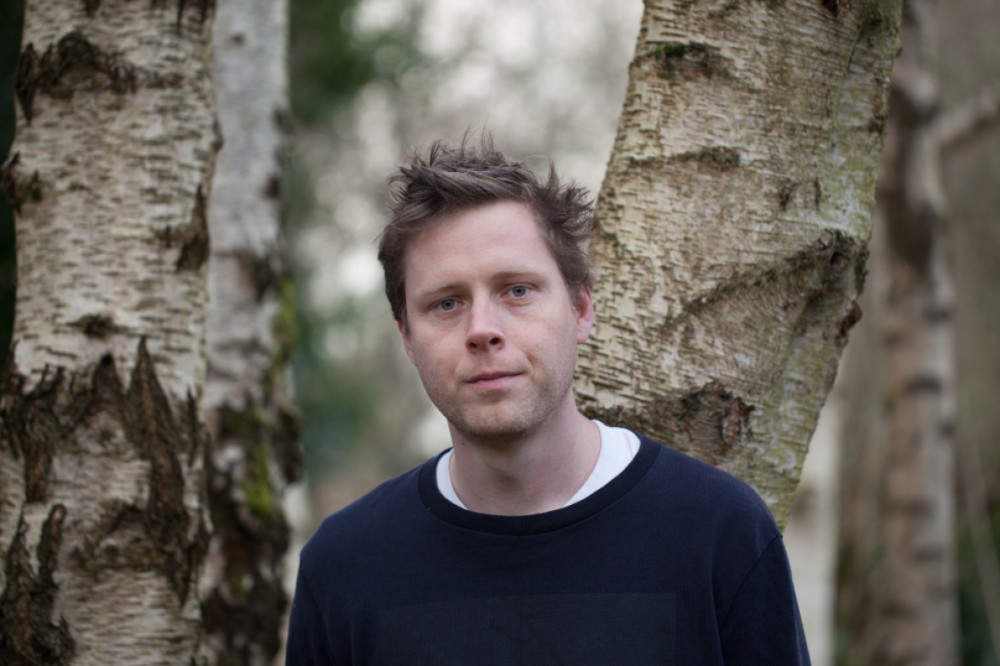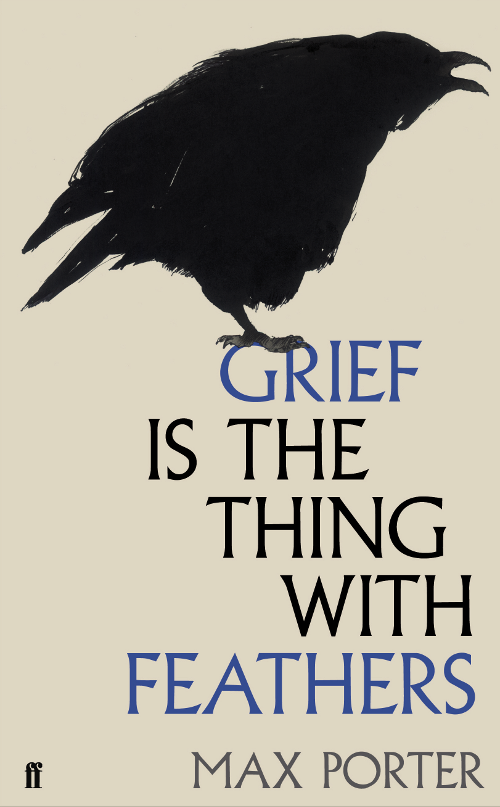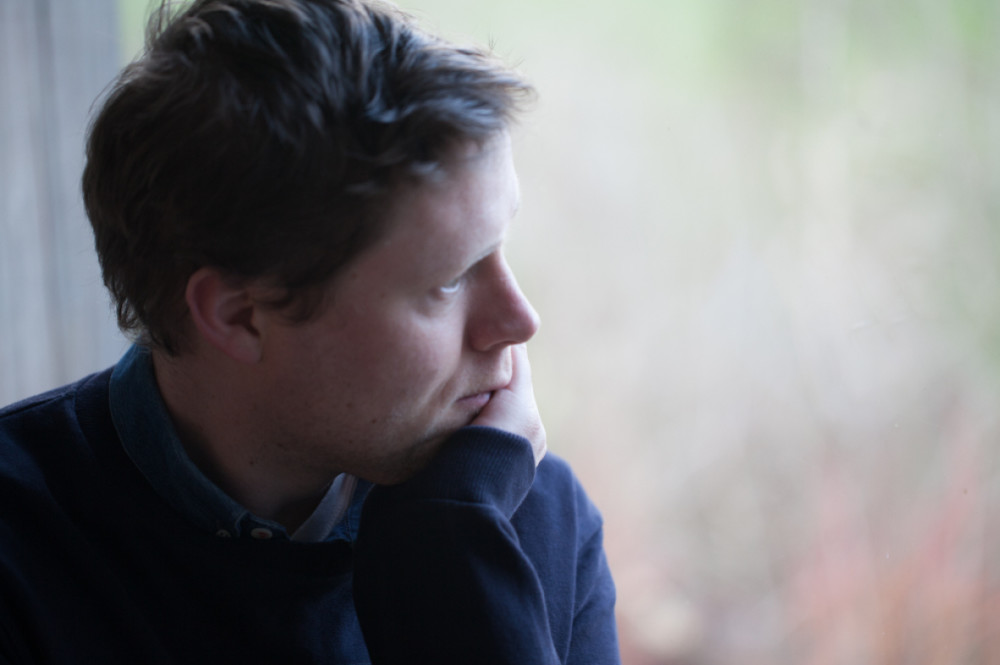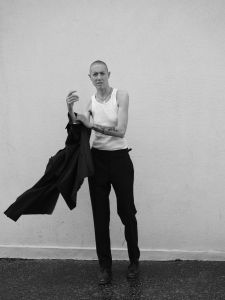Granta editor and Guardian first book award nominee Max Porter chats to PORT about taking risks in contemporary publishing

Max Porter’s first novel, Grief is the Thing with Feathers, has garnered considerable praise in the the two months since it was published, and has already found its way onto the shortlists of literary prizes including The Goldsmiths Prize and The Guardian First Book Award. It’s also resulted in confusion among booksellers, who’ve struggled to place it in bookshops. The book darts between poetry, fable, drama, and essay – all within a slim volume of 15,000 words. And as a former bookseller himself, Porter can sympathise with this confusion.
In his current role as senior editor at Granta & Portobello Books, he can also see that this confusion works, and that, despite much noise to the contrary, readers are excited by innovation of this kind, where narratives that play with form aren’t necessarily weighed down by plot. Grief is the Thing with Feathers is a small meditation on a huge subject, and, in a similar manner to the emotion it examines, it is structurally fragmented, individual, and brilliantly strange.
Ahead of the announcement of the 2015 Guardian first book award winner, we sat down with Porter to discuss the world of contemporary publishing, rewriting the definition for a successful novel, and paying homage to Ted Hughes.

Grief is the Thing with Feathers is a combination of several forms: essay, poetry and short story. Were there any other works that
inspired you to publish in this way?
It reflects my reading life more than any specific writers or works. Moving between essays (on the tube), poetry (on the loo), children’s books (all the time) and novels (before bed), allows me to be quite self-conscious about what works for me and what doesn’t, and what happens in the movement between those forms. But, of course, I’m endlessly inspired by other writers.
In the case of this book notably: Anne Carson, Basil Bunting, Emily Dickinson, Russell Hoban, and Ted Hughes.
Your debut pays tribute to Ted Hughes’ book of poems Crow, almost translating his idea of the character into your own. What role do you think homage plays in contemporary literature?
I think we have an uneasy relationship with it, in this country especially. The assumption is you’re stepping on someone’s toes, or stealing their energy, and the implication is that it’s fine to do that invisibly, but not visibly.
I’m all for rootling around in the legacy of our dead poets, and believe they wouldn’t want it any other way. It’s all a game, ultimately – writing against the backdrop of all that has come before. I’m interested in letting the rules of the game, the scaffold of the exchange, show through and be a part of the surface.
There have been a lot of opinions expressed lately about the longevity or death of the novel. Do you think the format needs to adapt in order to survive?
I think it already has and always will. It’s a remarkable and singular thing, the novel. It’s always been in crisis, and it’s always been flirting with its own demise.
The best novels ever written take this crisis as a kind of generative starting point. I think the industry patronises readers, and fearfully shrinks the consumer into neat little algorithmic boxes. It’s daft; readers are unpredictable. The novel will be holding up a mirror to us, and sneaking in the odd devastating challenge, for as long as we have eyes to read with.
What advice would you give to first-time novelists and what have you learned from writing your debut?
Don’t fuck around second-guessing the market. Write the book only you can write. Don’t write for an imagined audience. Don’t write for an imaginary critic. Challenge yourself according to your own intensely demanding critical apparatus. Give it to people who will be harsh. Read it aloud. Re-write and re-write and save the drafts.

Where do you write?
The desk is no more, sadly – it made way for a cot. But I’m happy at the kitchen table with a glass of wine and a sharp pencil. On my work desk I have a David Jones postcard, a feather, and some LEGO. Sums me up, really.
Were there any challenges in getting published?
I was disgustingly lucky. Because it’s concerned with Ted Hughes, I sent it to Faber, thinking they’d either sue me or do it, and they did it. Beautifully. Other publishers have written to me to say they wouldn’t have had the nerve. But that’s the point. You have to see a way, and take it. Faber saw it from day one.
Is there space for the experimental novel in the publishing world today?
Yes, absolutely yes there is space for the experimental novel. Readers are willing to take risks. And I don’t think experimental work need be at the cost of emotional truth, humour, vulgarity, suspense or any of the things more associated with ‘popular’ writing. We can have it all.
Some writers say they’re afraid to write emotionally or sentimentally. Why do you think this is and how did you address this in your novel?
It’s the biggest trap, I think, for writers keen to avoid cliché. And perhaps there is a fear of being exposed. Someone read my book and said ‘people will think that sex scene is based on your real sex life’. Well, yes, but of all the risks a writer takes that can’t be the most frightening, can it?
I think great writing about emotional landscapes sneaks up on you. I like it when I’m undone by something in a text a little while after it’s happened.
Grief is the Thing with Feathers is published by Faber




